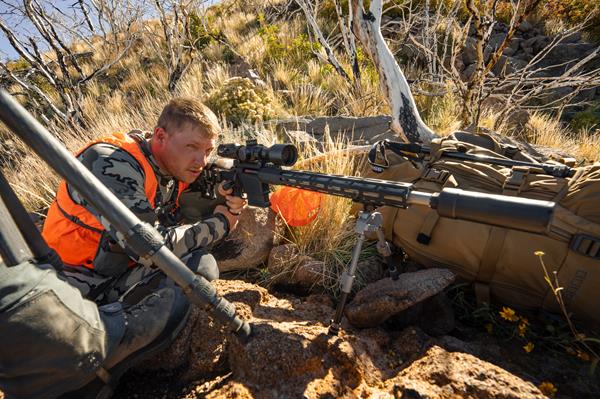
In the past decade, advancements in technology have greatly impacted the hunting world, providing hunters with
new tools and techniques that have made scouting, tracking, locating, and killing game more efficient. GPS devices, phone apps, thermals, radios, long-range guns, optics, trail cameras, and ATVs/UTVs have all contributed to the increased effectiveness of hunting compared to years when our grandpas tracked down elk in the snow with their 30/30s. During this process, I feel like we have lost track of where hunting came from and are so focused on the kill that we are beginning to endanger ourselves by not limiting ourselves with the use of modern technology and gear. I know it is the state department’s job to look at and set restrictions and tag numbers, but I feel like we are creeping in on the days where hunters are going to have to make some restrictions for themselves.
The ability to e-scout has made hunting more efficient, but it can also be a double- edged sword. While e-scouting can help hunters identify potential hunting areas and key habitats, it can also take away from the experience of having to put actual boot leather on the ground. Over the years, I have relied heavily on e-scouting but have found that there are a lot more people mastering it now, making it increasingly more difficult to find areas that aren’t receiving a lot of pressure from others who are putting in the work behind a computer screen as well. This isn’t a bad thing, but it is exposing areas that used to receive a lot less hunting pressure.
Trail cameras have become increasingly popular among hunters as well, but they have also raised concerns about their impact on the hunting experience. Trail cameras allow hunters to identify potential hunting areas and track wildlife without having to spend time in the field. This makes it easier to find out which areas and animals you want to target without spending countless hours in the field. Again, I have personally killed animals that I would have never found without a trail camera and know that they can be a big advantage and a time saver.
Radios, although they can be used as a helpful communication tool, have also created an issue that makes it easier for hunters to communicate with each other to “walk” someone in on an animal. Doing so allows someone to sit far away and keep track of both the animal and hunters stalking it, giving them a play-by-play on what the animal is doing or where it is located, creating an unfair advantage for the animal. Many states have also seen this as an unfair advantage and have started to restrict the use of radios for hunting purposes.
Thermal imaging and high-quality optics have made it easier for hunters to track, locate, and target animals. The use of thermals can be dangerous as it can give hunters an unfair advantage over game by being able to locate animals that are otherwise undetectable. With the correct optics, you can sit and glass for hours on end without eye fatigue and be able to pick up animals from miles away. This is another huge advantage for the modern-day hunter.
With the use of modern bows, long-range guns, and rangefinders, it is easier to take down game from a distance, making it tempting to take shots that are beyond what were common when a lot of hunting laws/regulations were created. While long- range shooting may seem impressive, I believe it has resulted in more wounded and unrecovered animals than most would expect. It also takes away from the real challenge and skill required to get inside the “zone” where you are up against the animal’s senses. Again, not saying I am against it, but I think it is something every hunter needs to consider before blaming state agencies for poor wildlife management.
I don’t believe that these things are necessarily bad, and I am a firm believer that there is a time and place for all of these advancements, but at some point, we have to look in the mirror and realize that if we don’t start to moderate ourselves, we are going to be faced with bigger issues in the future. I think it is essential to strike a balance between utilizing technology and preserving the traditional values and practices beyond what the state or Game and Fish departments set. Hunting has evolved with the advancement of technology, but it is essential to remember where it came from and the fundamental values and traditions that have been passed down from generation to generation so we can share them with the generations to come.